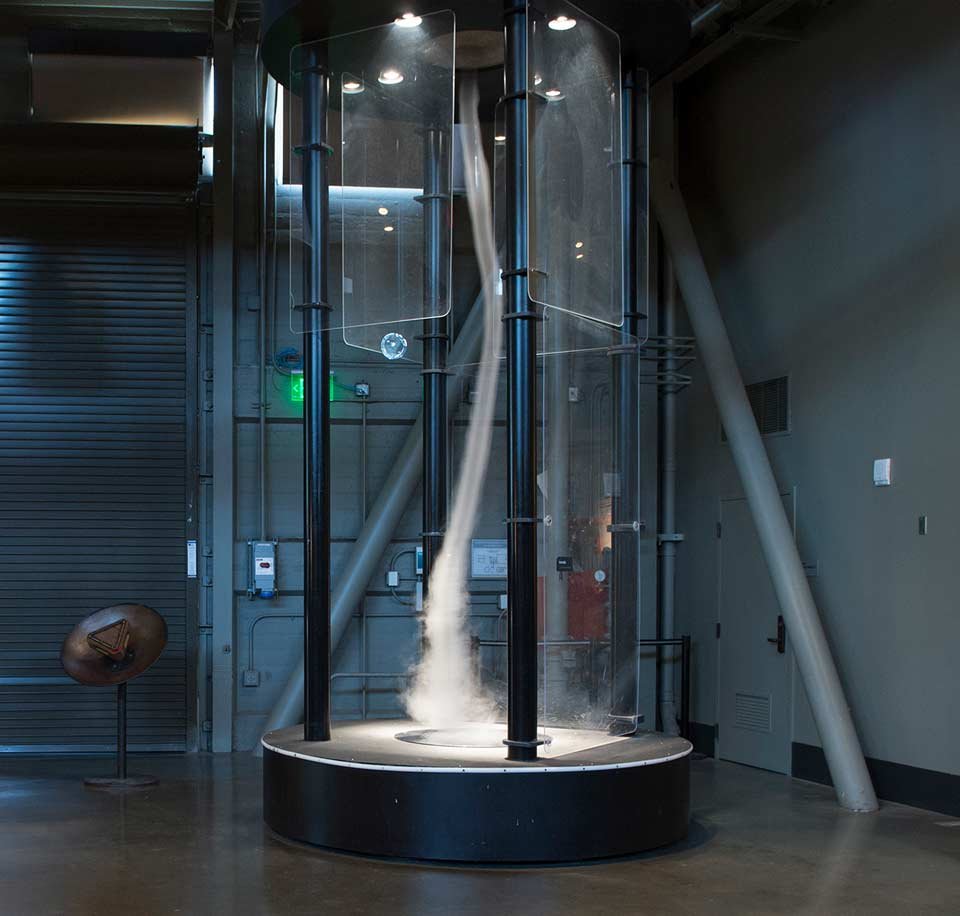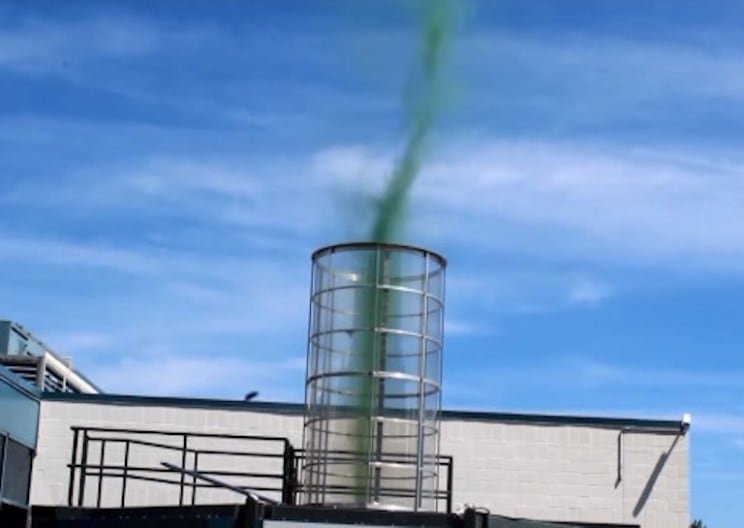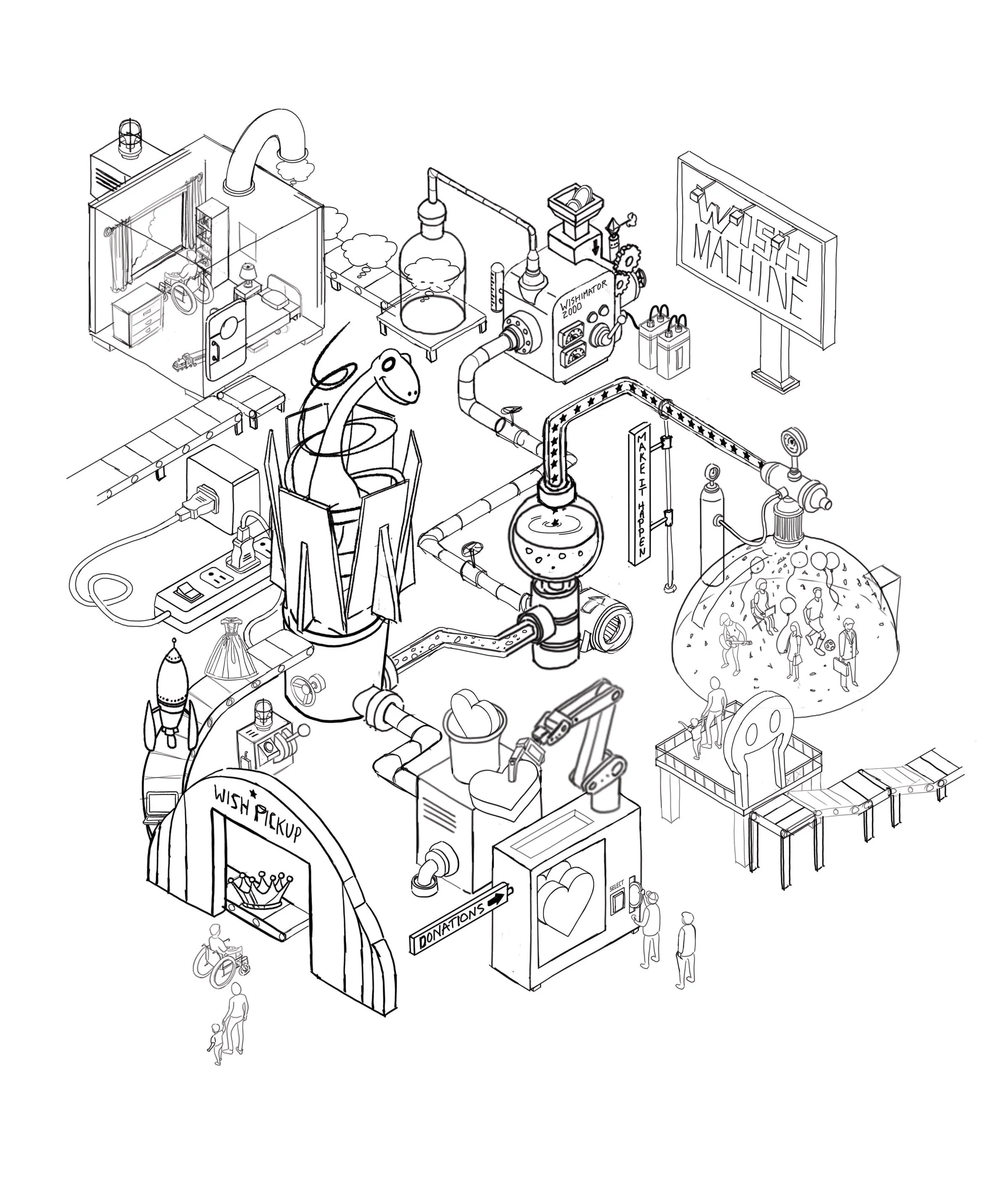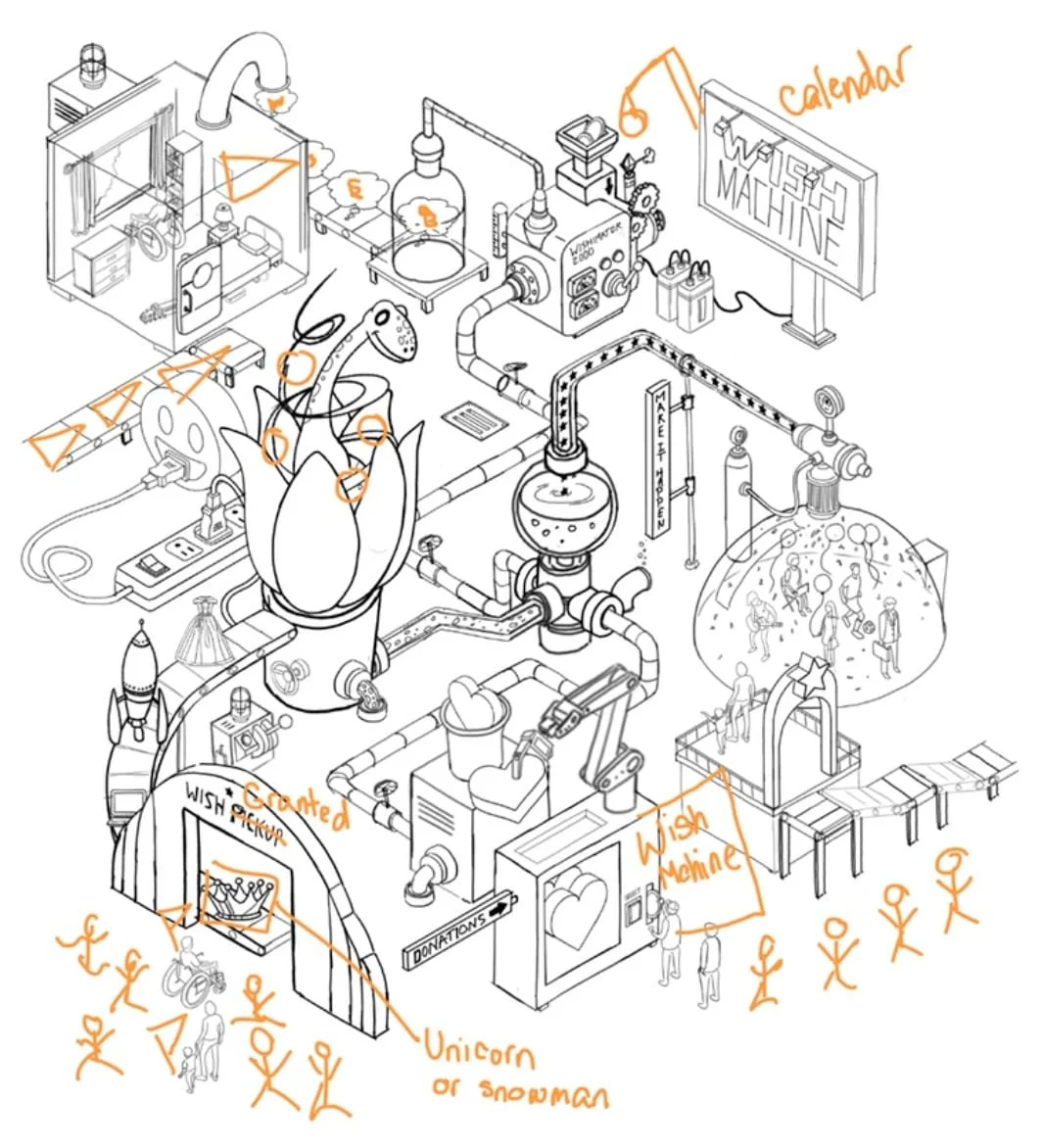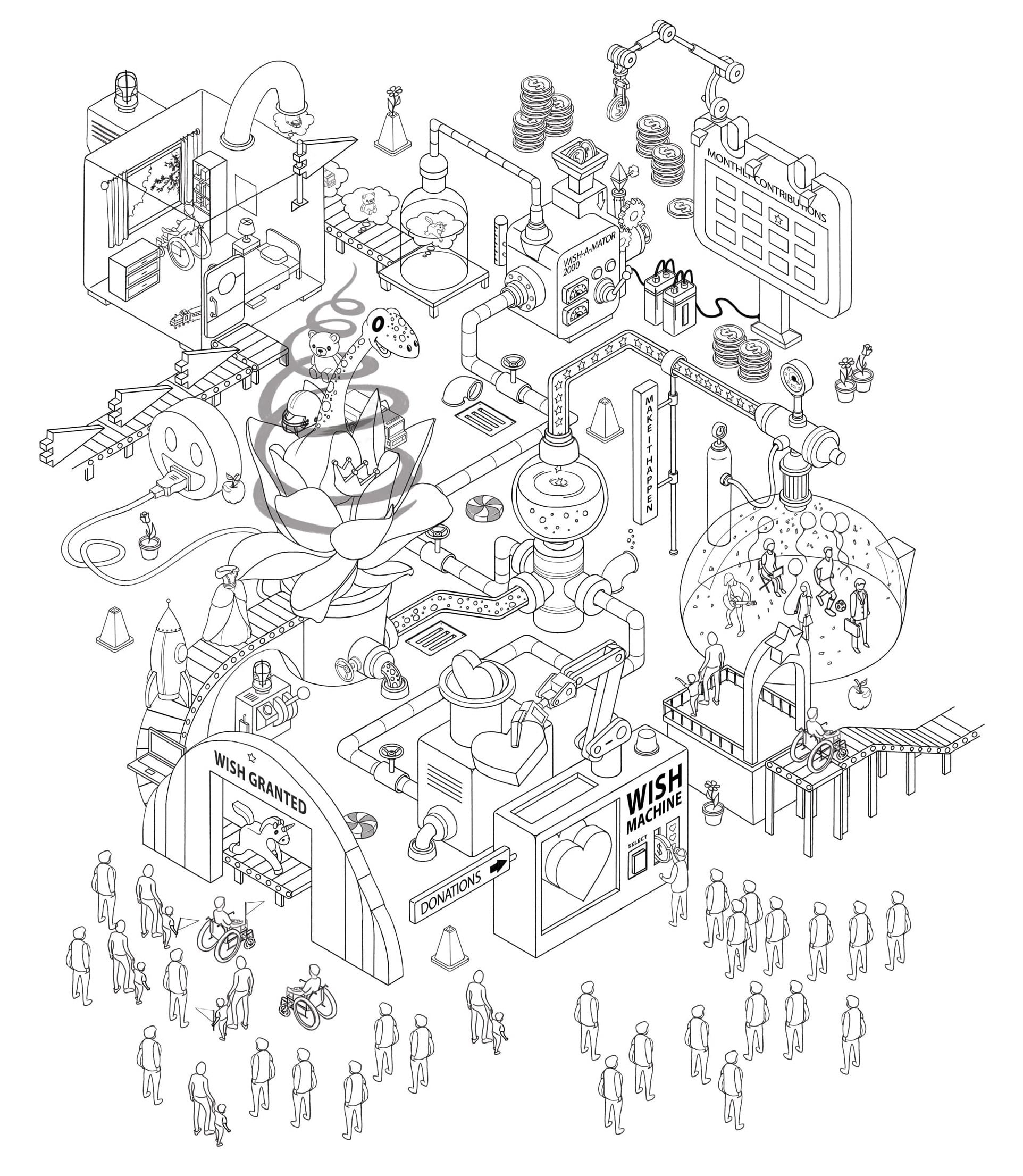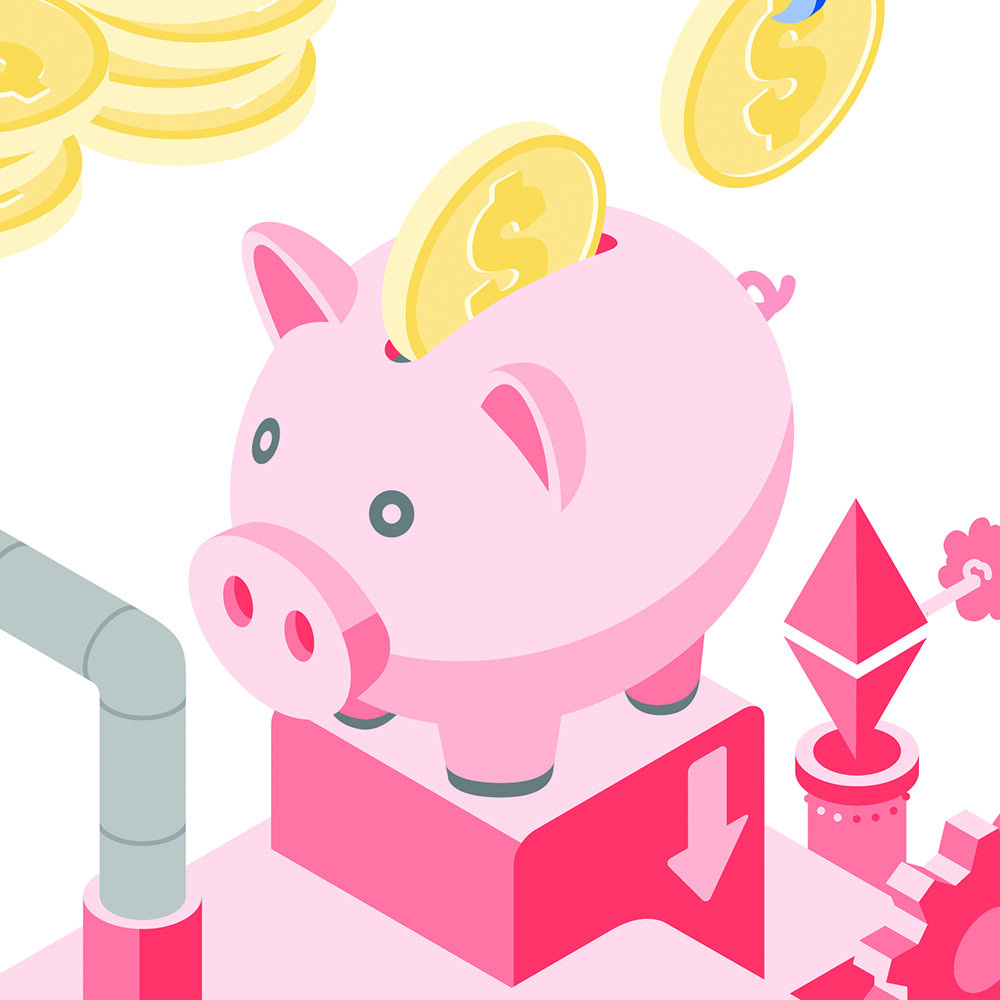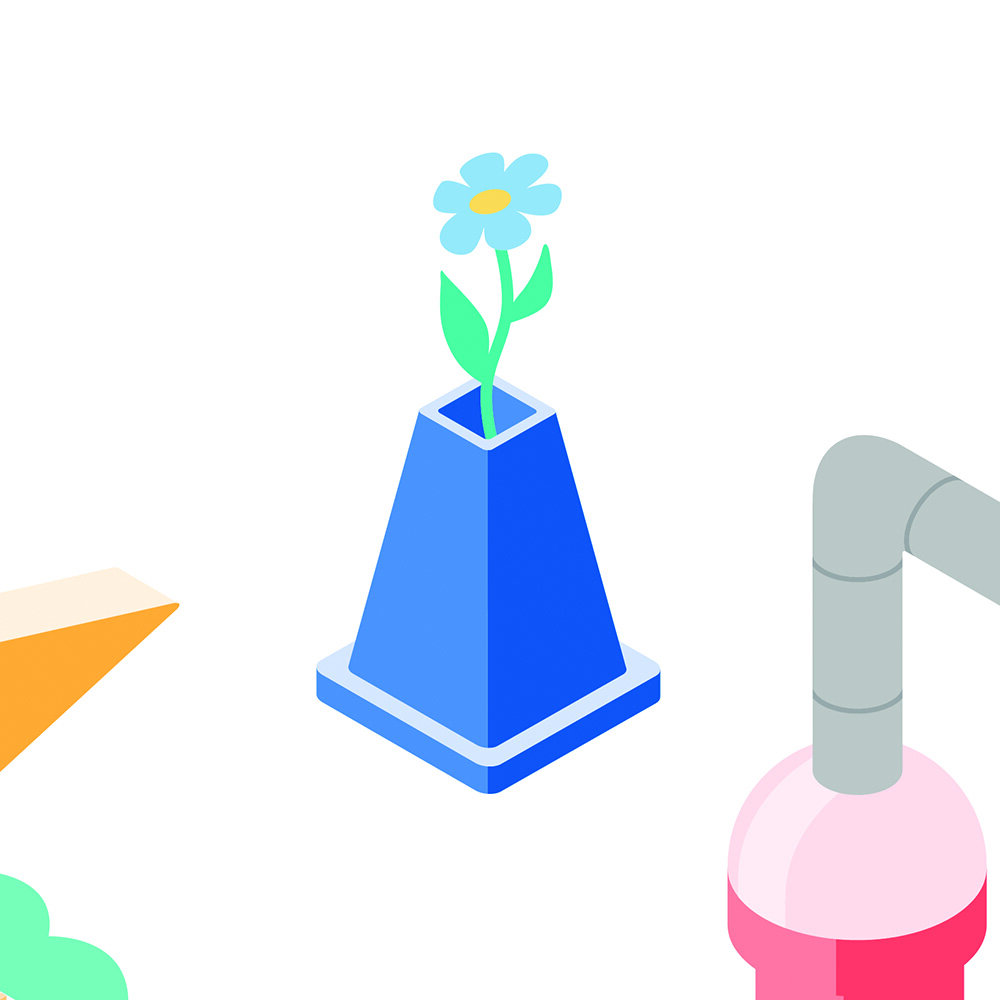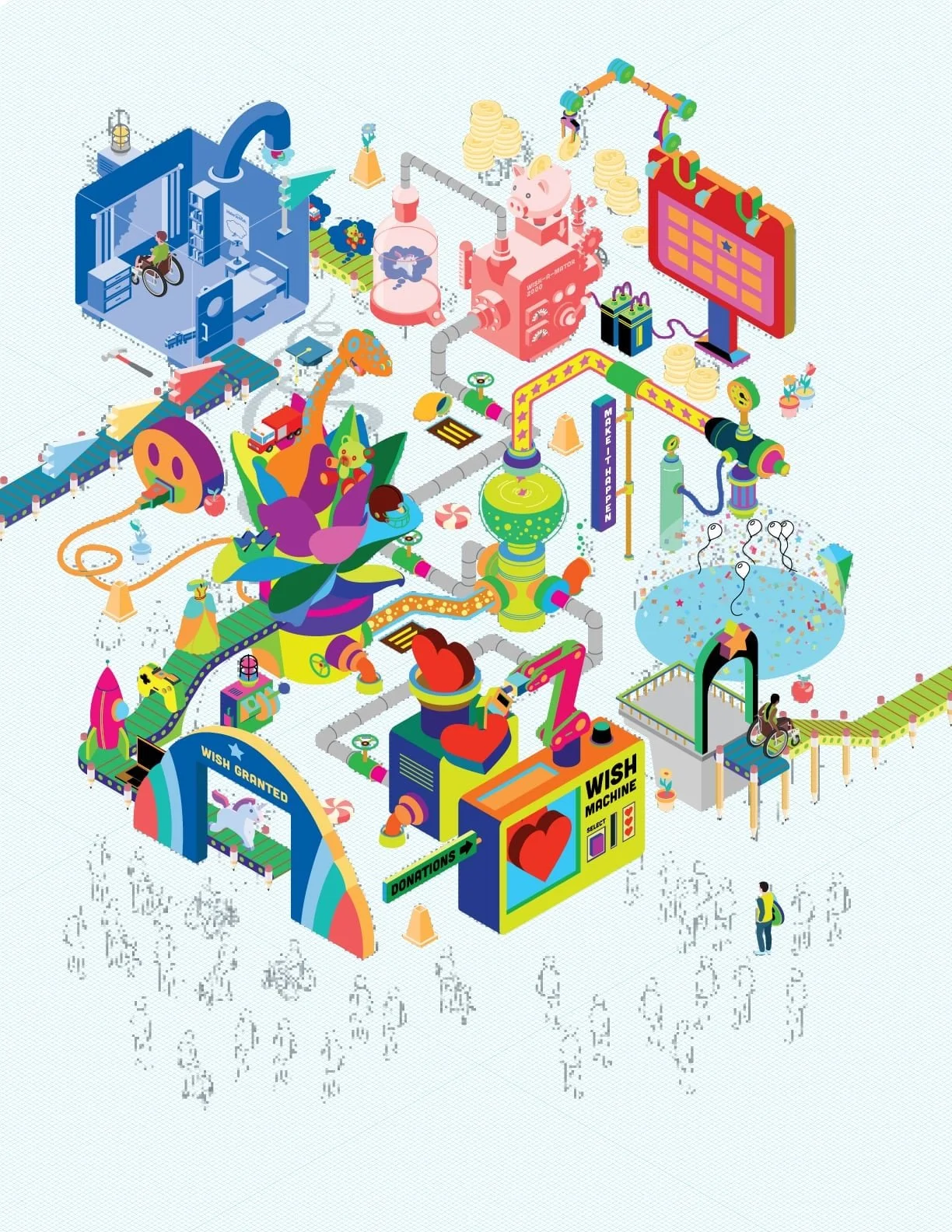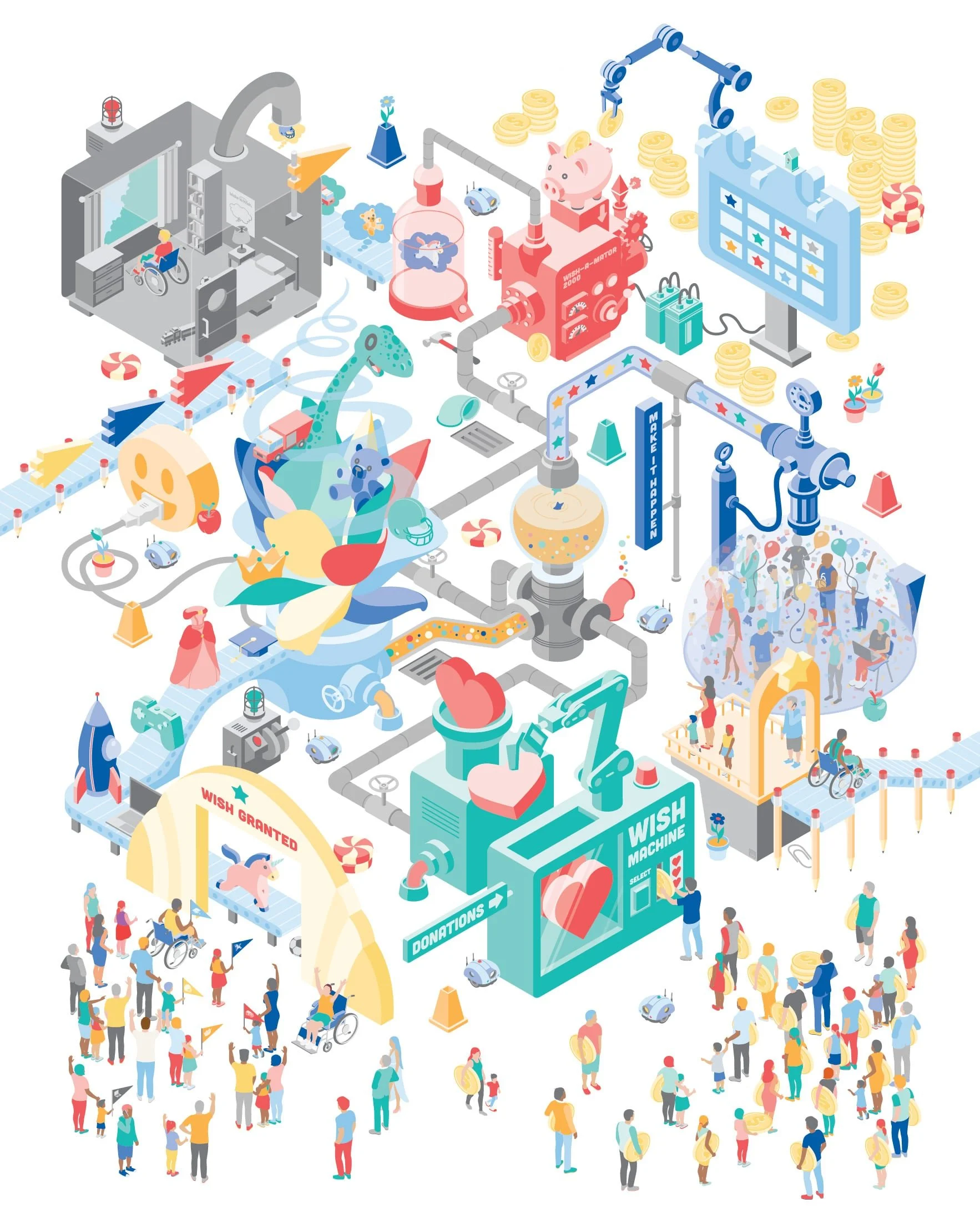How a wish becomes reality.
I worked with Atlanta-based agency, One & All, to create a fabulous illustration for the Make-A-Wish Foundation. They were looking for an illustrator who could create an isometric "machine" that visually represented the entire process at Make-A-Wish: How a wish becomes a reality.
The team at One & All and I spent a couple hours via Zoom discussing the particulars of the project, initial concepts, and their expectations for the final product. The idea was to create a visual that explained the process by which a "wish" becomes a reality at Make-A-Wish—That process includes a whole lot of people and whole lot of behind-the-scenes work for each wish.
The concept they presented me with was described as a "wish tornado". Beyond that initial idea, a flow chart that described each step in the process, and a request to utilize brand colors in the finished illustration, I was given a blank slate.
My job was to take the flow chart below and bring it to life.
The isometric machine would be composed of seven different sections—Isolation, the wish "generator", volunteers, anticipation, donors, the wish machine, and granting the wish.
My solutions for each section:
Isolation is represented by the boxed bedroom that begins the entire process. The child is isolated and dreaming of something bigger.
Wish generation is represented by the Wish-a-Mator 2000 device which is fed by a calendar and funding.
Volunteers are represented by a group of people–celebrities, professionals, volunteers–in a domed enclosure that captures their energy and efforts.
Anticipation is represented by an overlook where the child can view the process.
Donors are lining up at the donation machine to purchase hearts.
And ALL of the above steps feed into a collection device that breaks down the contributions into a mixture that feeds the Wish Machine which is powered by a giant smiley face.
Finally, the wish is granted to eager children and families waiting at the end of the process.
Deliverables
The deliverables would include the final illustration and a file containing pieces and parts of the illustration they could use to create various marketing materials.
Concept Development
The "wish tornado" concept was optional, but I liked the idea enough that I ran with it. I researched real-life machines that scientists and researchers are currently building in an effort to create energy from cyclonic forces as inspiration for the concept—That proved too hard-edged and industrial for my tastes.
I landed on the idea of a giant spinning flower powered by a smiley face that magically created the wish objects from a steady stream of the combined matter of donations, volunteers, and private contributions. The flower seemed logical to me.
I presented a cleaned up detailed line drawing that incorporated a few requests that arose during a conference call with the team. Then I spent a few more hours making numerous minor tweaks of my own to improve the visual layout.
From there, it was simply a matter of adding a boat-load of details, including an assortment of objects to help make the artwork more fun, balance the illustration, and fill in space.
Color
I typically begin by coloring in the artwork with random colors to work out the planes of objects prior to applying the final color palette. Once this is completed, I'll solidify the color palette and simply swap in the approved colors—This process prevents me from spending too much time trying to perfect details like light and shadow on the first pass. It also speeds up the entire process.
The final illustration incorporates very specific color guidelines from Make-A-Wish's brand book.
I colorized each section of the illustration with one of MAW's eight primary and secondary colors and then limited the color palette within each section to tints of 20%, 60%, and 100% to prevent the overall color scheme from getting out of hand.
The final illustration was approved with zero changes.
Thank you for sticking with us through the whole process. You really created magic here.
~Jenny Dougherty, Associate Creative Director, One & All
My last task was breaking up the illustration into pieces and parts that MAW's in-house designers could use to create random marketing graphics—This involved a not-insignificant feat of file management that allowed me to group hundreds of individual layers into sections for export.



